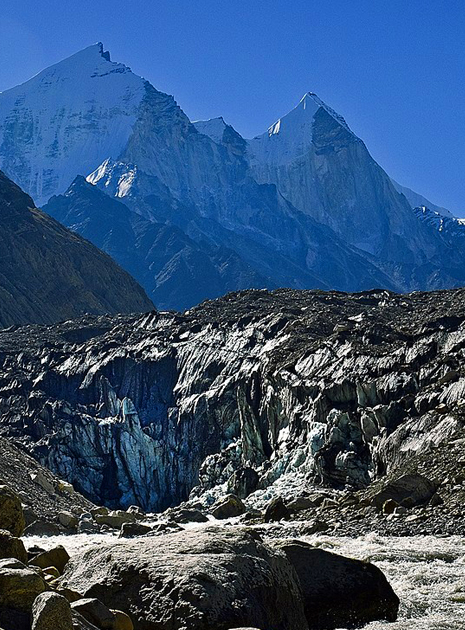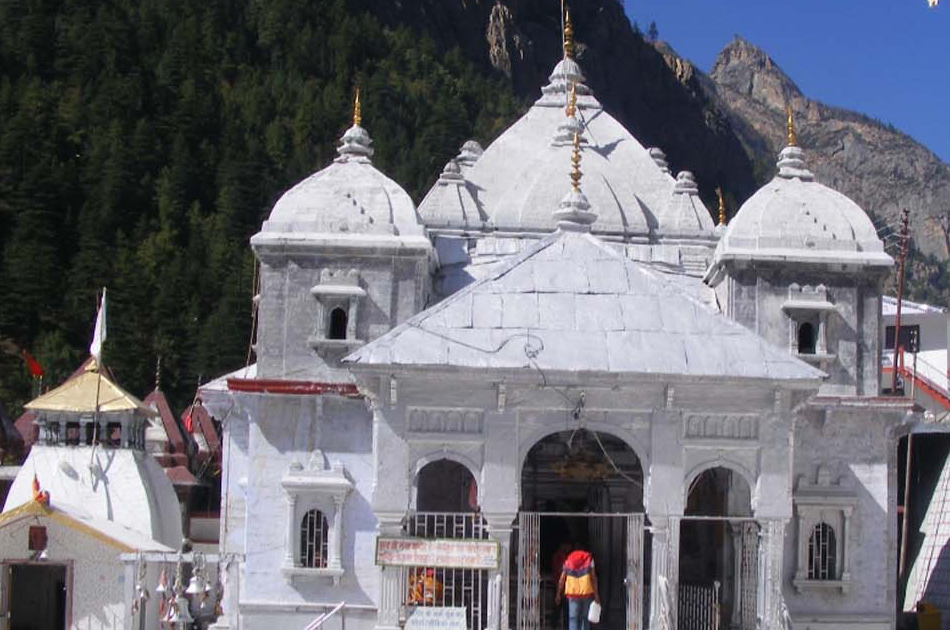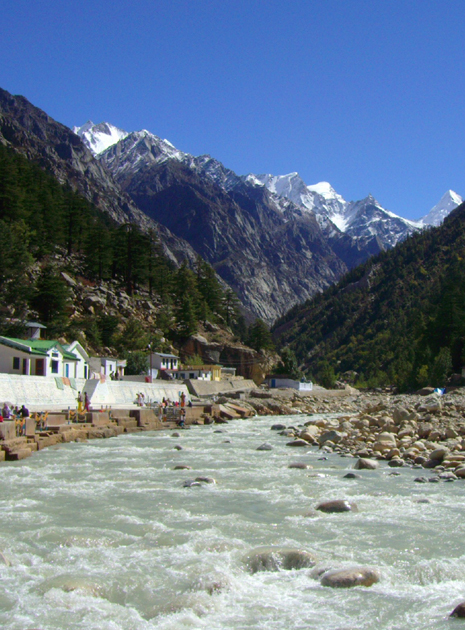Since the conditions on high-altitude are unpredictable, there is a constant readjustment of plans to adapt to the situation at the time. Providing fixed day-wise schedules is hence tricky. Mt. Bhagirathi has 4 camps between basecamp (4,800M) and the Summit (6,512M): Advanced Base Camp (5,000M), Camp 1 (5,200M), Camp 2, and Summit Camp (6000M).
Given that high-altitude climbs demand a rigorous acclimatization routine, expeditions usually employ the method of making rotation rounds between camps so as to better adapt to the environment. Living the tenet of ‘climb high, sleep low’ which is a golden rule for survival in that altitude, we make multiple rounds between campsites. For Mount Bhagirathi , specifically, we make two rounds. The first is when we ferry our load up to the next camp, leave our stuff there and then climb back down to the lower campsite to spend the night.
The next day, we climb back up to the camp where we left our stuff and proceed to pitch our tents to now occupy the campsite. What this achieves is a three-fold benefit. Firstly, you can divide your weight between two days so as not to carry a massive amount in one trip. Secondly, it introduces the body to a higher altitude environment but gives it time to better adapt to it by not pushing it. Thirdly, for each time that you climb the same route, it tends to get easier and easier, refining your technique, skill and adaptation.
After load ferry rotations between camps and occupying Summit Camp on Day 12, we will make our first summit attempt on Day 13. Day 14 through 17 will be used for descend, to recuperate our strength on Base Camp and make our way back down to Bhojwasa and further down to our starting point at Gangotri as we bid adieu to the Bhagirathi Massif.
The route between camps are moderately sloped gradients with few sections of a higher gradient that would need a use of fixed ropes. For certain precarious sections, we will also be roping up for added safety. The route is entirely on ice or snow-covered ice with open and hidden crevasses and hence demands extreme caution on every step. The descent is precarious, too, for we will be climbing down equally steep slopes with depleted energy reserves. If all goes well, we reach back down to Gangotri by Day 17.





